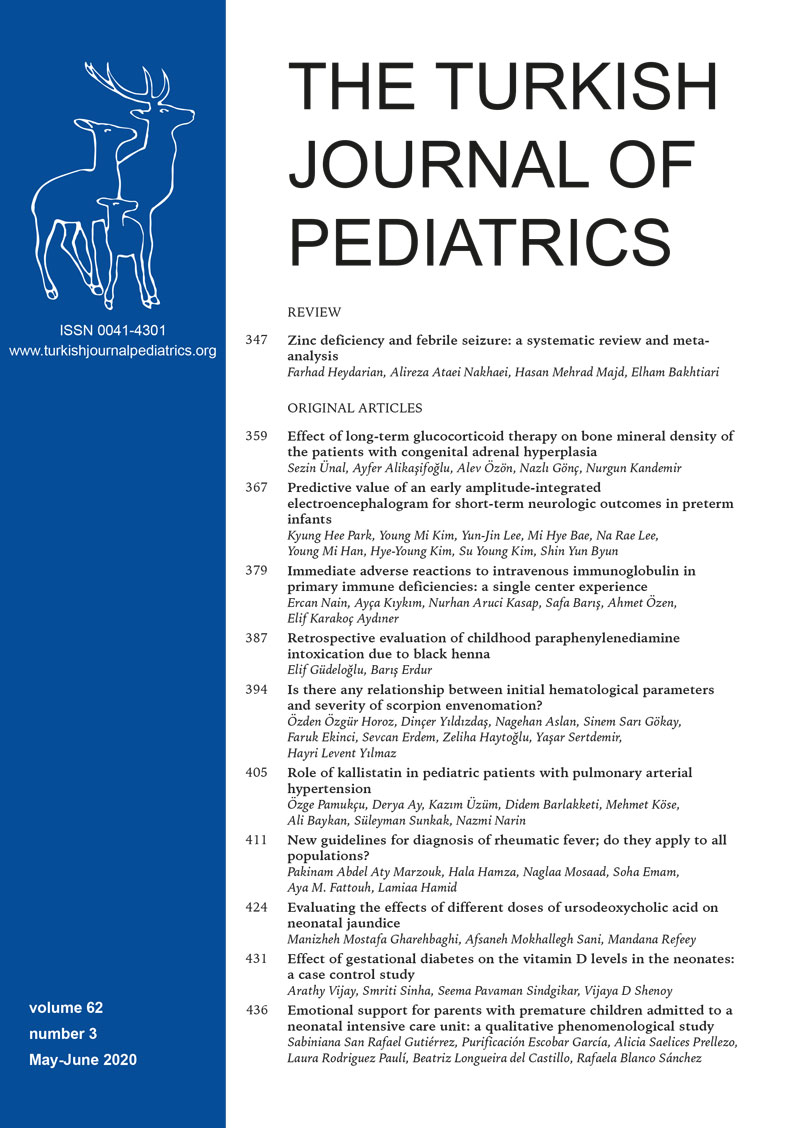Abstract
Background and Objectives. Congenital Myotonia (CM) is a disease caused by mutations in the skeletal muscle chloride channel gene (CLCN1). Mutations can be transmitted as autosomal dominant (Thomsen's disease) or recessive (Becker's disease). CM is more common in men and Becker myotonia may be 10 times more common than Thomsen myotonia. Genotypic and phenotypic characteristics of CM may vary according to geographical region and ethnicity.
Method. In this study, we present the genotypic and phenotypic characteristics of 20 Turkish CM patients all diagnosed by molecular genetic testing. The clinical and laboratory features of the patients with mutation in CLCN1 gene were retrospectively analyzed.
Results. Eleven of the patients were female. c.1064+1G > A splice-site change, p.Arg338X (c.1012 C > T) stop codon, p.Gly190Ser (c.568_569delinsTC) missense mutations were detected. Eight of the 20 patients were found to be compatible with Becker type and 12 with Thomsen type, based on mode of inheritance, neurological examination findings and genetic test results.
Conclusion. The c.1064+1G > A splice-site change mutation, defined for the first time in this study, expands the spectrum of mutations in the CLCN1 gene. Thomsen type and female gender were observed to be more frequent in this series of patients from Turkey.
Keywords: Becker disease, CLCN1 gene, Congenital myotonia, Thomsen disease
Copyright and license
Copyright © 2020 The Author(s). This is an open access article distributed under the Creative Commons Attribution License (CC BY), which permits unrestricted use, distribution, and reproduction in any medium or format, provided the original work is properly cited.














